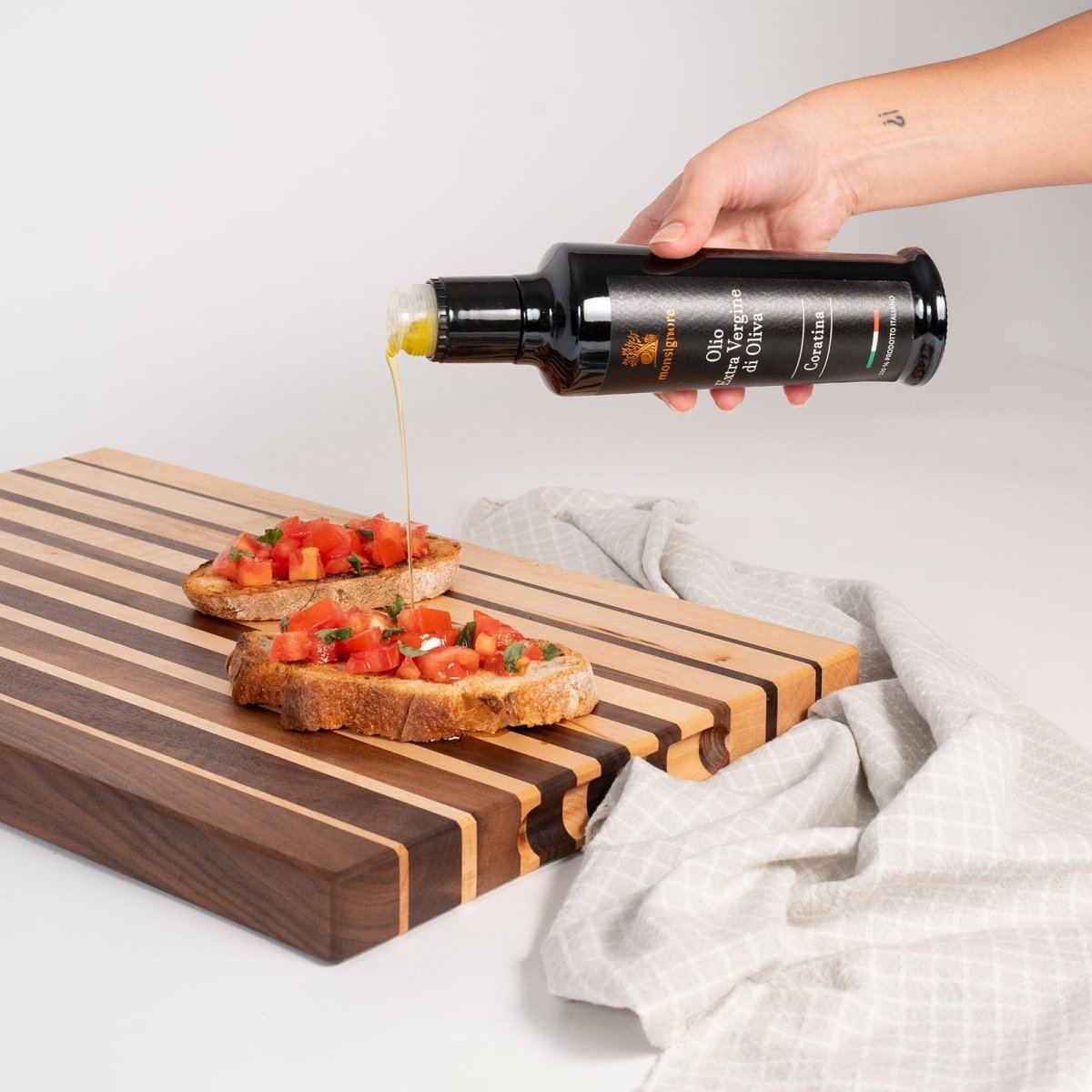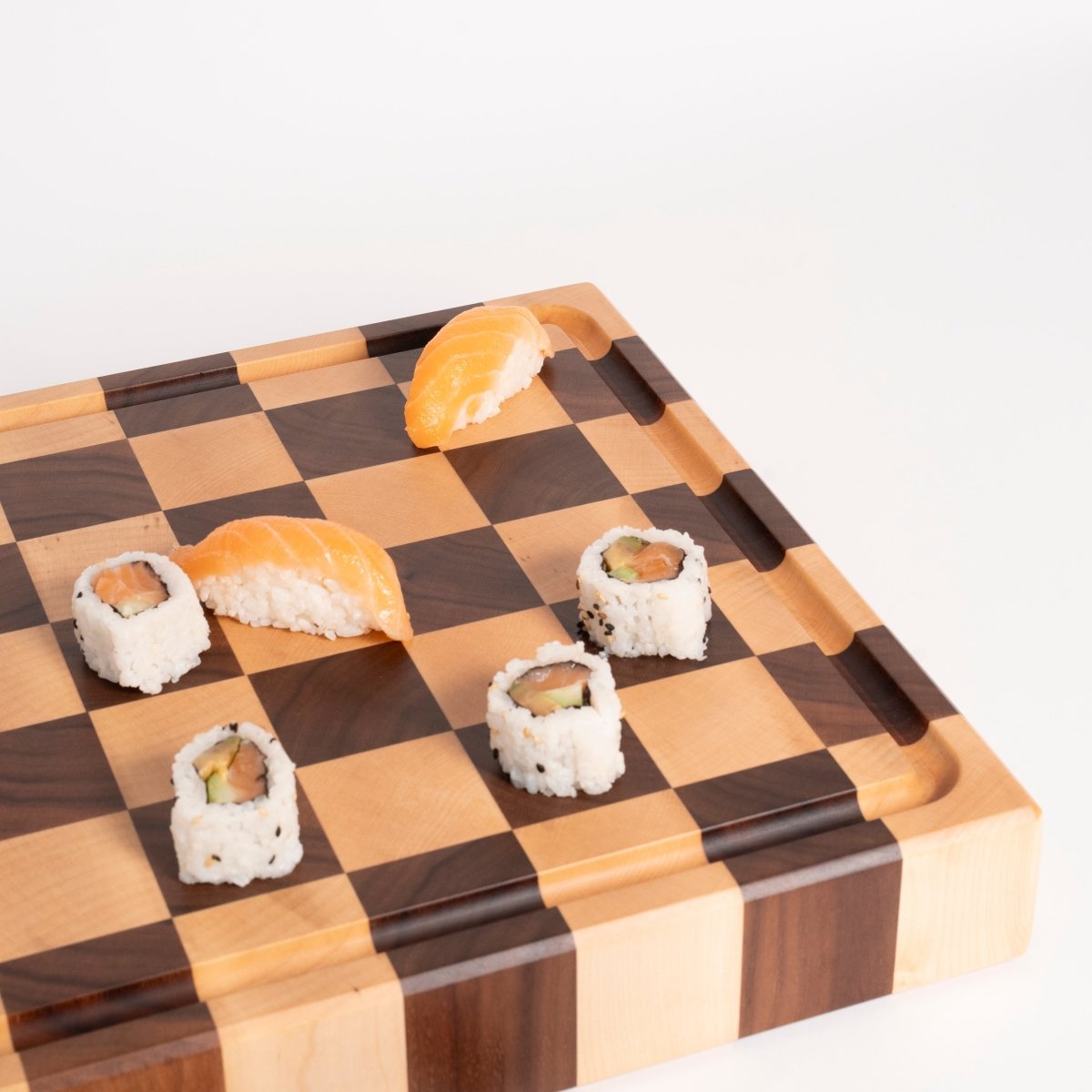Discover the advantages of Face Grain wooden cutting boards
When it comes to choosing the perfect cutting board for your kitchen, you may be faced with several options to choose from.
Among the most common are wooden cutting boards with face grain, side grain and end grain processing.
Today, we'll focus on face grain cutting boards and find out what makes them a popular choice for many cooking enthusiasts.
Face Grain, Side Grain and End Grain: What are the Differences?
Before delving into the details of face grain wooden cutting boards, it is useful to understand what these three types of woodworking mean:
-
Face Grain (surface grain) : In this process, the pieces of wood are arranged parallel to the surface of the cutting board, creating a smooth and uniform surface.
-
Side Grain : Side grain cutting boards are made with pieces of wood placed sideways to the surface, which gives them greater strength and durability.
-
End Grain : This process involves using the pieces of wood so that the cut side of the fibers faces upwards. End grain cutting boards are known for their exceptional strength and self-healing ability.
Face Grain Cutting Boards: A Fascinating Option

Face grain wood cutting boards are a popular choice for anyone who loves to cook. These cutting boards have the following features and advantages:
Advantages of Face Grain Cutting Boards:
-
Aesthetics : The parallel arrangement of the wood fibers gives an elegant and attractive appearance to face grain wood cutting boards. They are ideal for those who want to add a touch of style to their kitchen.
-
Lightweight : Face grain cutting boards are generally lighter than their side grain and end grain counterparts, making them easy to handle and move around the kitchen.
-
Ideal for Light Work : Thanks to their smooth and uniform surface, they are perfect for light kitchen tasks such as slicing vegetables, preparing sandwiches or serving cheese.
Disadvantages of Face Grain Cutting Boards:
-
Increased Wear : Due to their softer surface compared to side grain and end grain wood cutting boards, face grain cutting boards tend to wear slightly more.
-
Moisture Sensitive : Compared to end grain cutting boards, face grain cutting boards may be more sensitive to moisture and may warp or damage if exposed to extreme conditions.
What are the conclusions?
In conclusion, face grain wooden cutting boards are an excellent choice for those looking for an aesthetically pleasing cutting board that is ideal for light work in the kitchen, without major demands.
Their smooth, even surface makes them perfect for slicing and serving food.
However, it is important to keep in mind that they may require extra attention to keep them in good condition and prevent moisture damage.
Choosing a face grain cutting board is a choice of style and functionality that can improve your culinary experience and on InCut we have some classic models that you can find here or some more high-performance ones here




Leave a comment
All comments are moderated before being published.
This site is protected by hCaptcha and the hCaptcha Privacy Policy and Terms of Service apply.